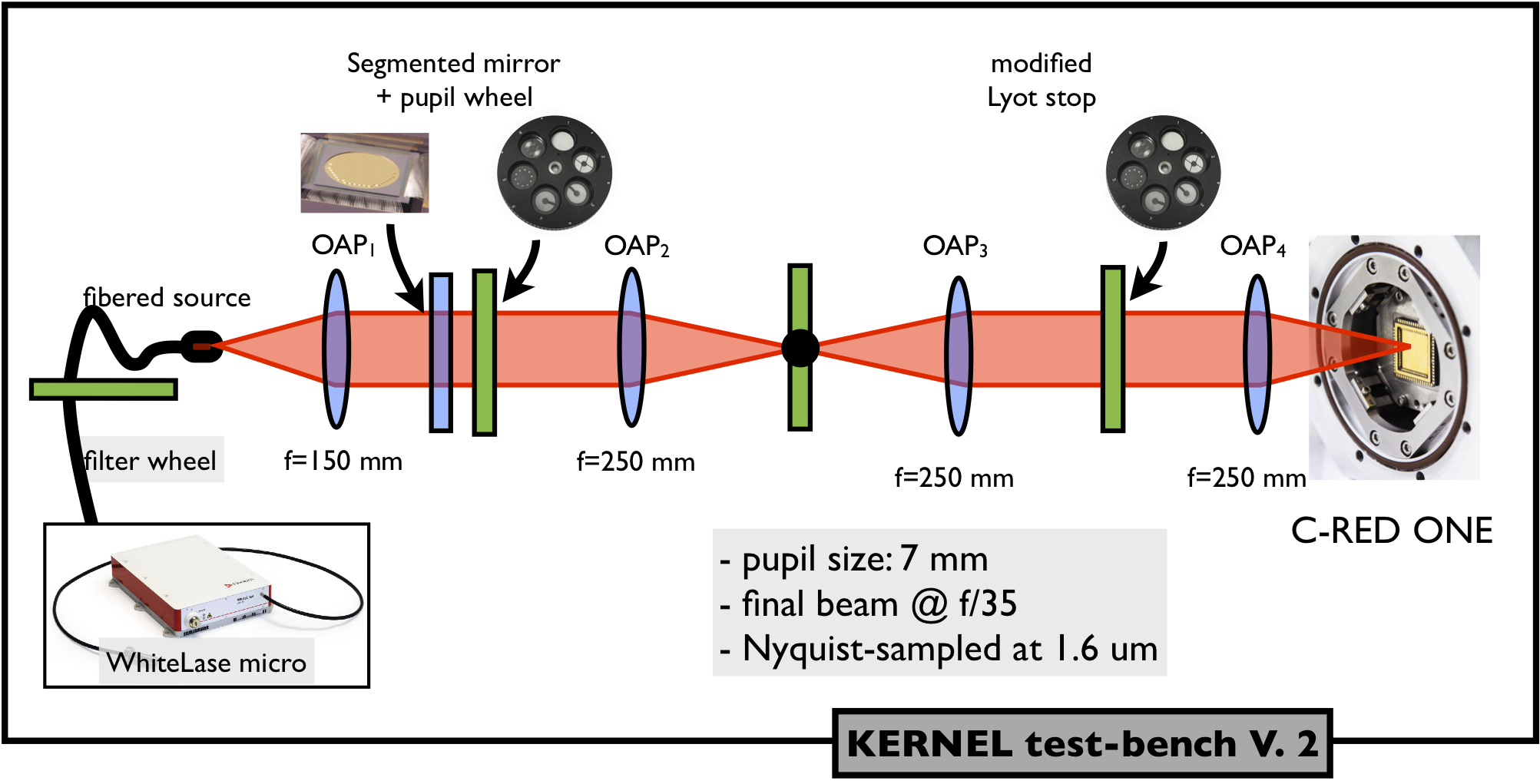
The KERNEL project, hosted by Observatoire de la Cote d’Azur (OCA) invites applications for a postdoctoral research position in the field of high-angular resolution astronomy starting no later than February 1, 2019. This position is funded by the European Research Council (ERC – CoG – grand agreement #683029) under the European Union’s Horizon 2020 research and innovation program.
The KERNEL project
KERNEL aims at enabling every optical and infrared astronomical facility to reach its ultimate angular resolution potential, often pushing beyond the formal diffraction limit, while preserving the full sensitivity. By looking at astronomical data as the result of an interferometric process, the KERNEL framework brings much needed robustness to high-performance observing techniques, required for instance for the direct detection of extrasolar planets.
The mission
The KERNEL framework offers a wide range applications that go from the post-processing of available archival data to high-performance focal plane metrology, partly coupled with high-contrast imaging. In order to develop and prototype the next generation of high-performance instruments and metrology monitoring tools for ground based telescopes and interferometers, the completion of the KERNEL project includes the construction of a general purpose test-bench, with elements that have already been successfully deployed for on-sky applications. The postdoc responsibility will be to oversee the completion of this KERNEL test-bench.
The test-bench primarily relies on a high-order segmented deformable mirror used to modulate the phase across a diffractive aperture and a high-cadence low-readout near-infrared camera, simultaneously in up to four complementary spectral bandpasses.
The multi-band aspect of the bench expands on the capability already offered by the KERNEL framework:
- it extends the range of tolerated input instrumental phase, with applications such fringe tracking for long baseline interferometry and adaptive optics for large telescopes.
- it provides further calibration capability, allowing for the acquisition of spectral differential kernel-phases
In addition, with its simple but agile high-contrast mode, the bench will also make it possible to experimentally validate observing strategies devised in the context of the project that bring robustness to aberrations to high-contrast direct detection.
How to apply
A Ph.D. in astronomy, physics, or a closely related field is mandatory. We are interested in individuals with several years of post-PhD research experience in the development and the scientific exploitation of instrumentation in the field of high angular resolution astronomy that include active wavefront compensation either in the laboratory or at the telescope. The candidate should be willing to collaborate with and assist graduate students that will use the KERNEL bench for their research projects. The candidate will also be encouraged to take advantage of the experimental setup and the KERNEL project members expertise to pursue his/her own research interests.
The candidate must also possess a strong background in the modeling, reduction and interpretation of diffraction dominated data (interferograms and/or AO-corrected images). Experience with the Python and/or the C programming language is highly desirable.
The initial appointment will be for two years, with possible extensions up to four years. The successful candidate will be hosted by the Lagrange Laboratory, with a lab located on the campus of Valrose, downtown the beautiful city of Nice, France.
To apply, please send a copy of your curriculum vitae, and a summary of your research interests. Also arrange for three reference letters to be sent to Frantz Martinache (frantz.martinache@oca.eu). For full consideration, applications should be received before September 15, 2018, although applications will be reviewed up until the position is filled.
